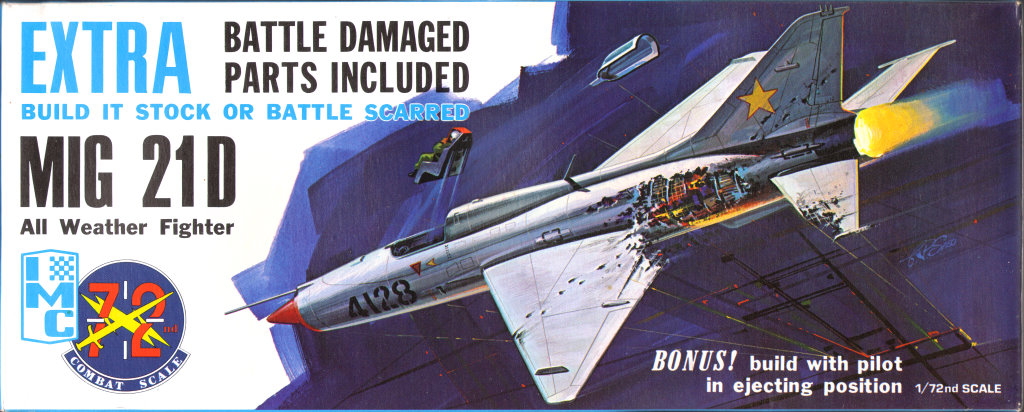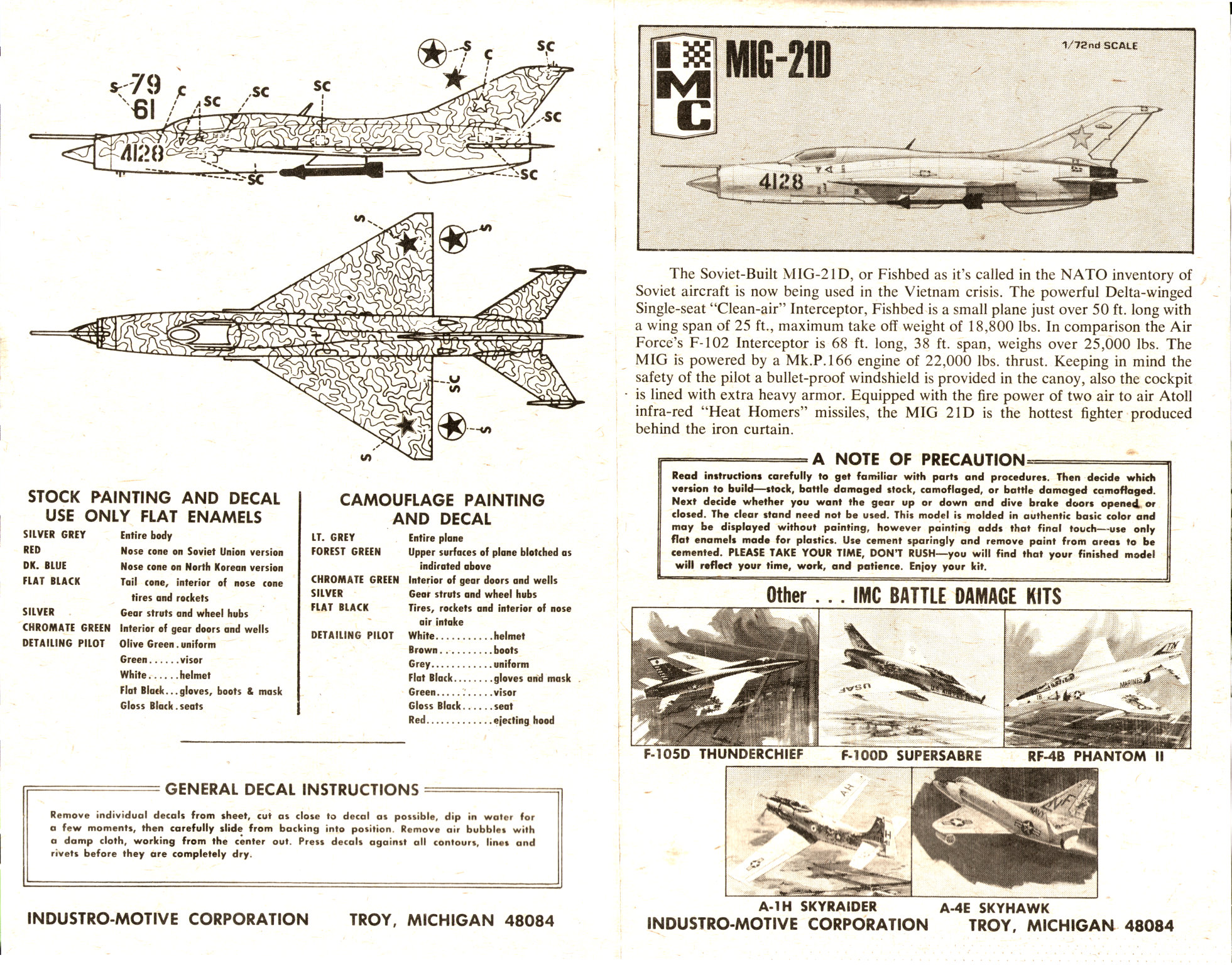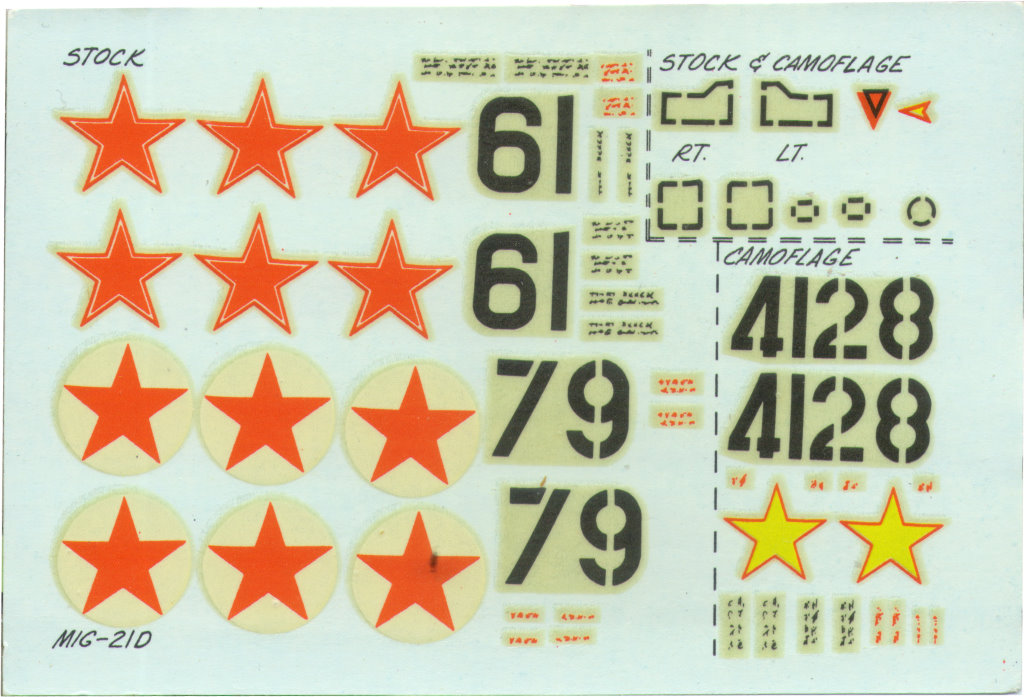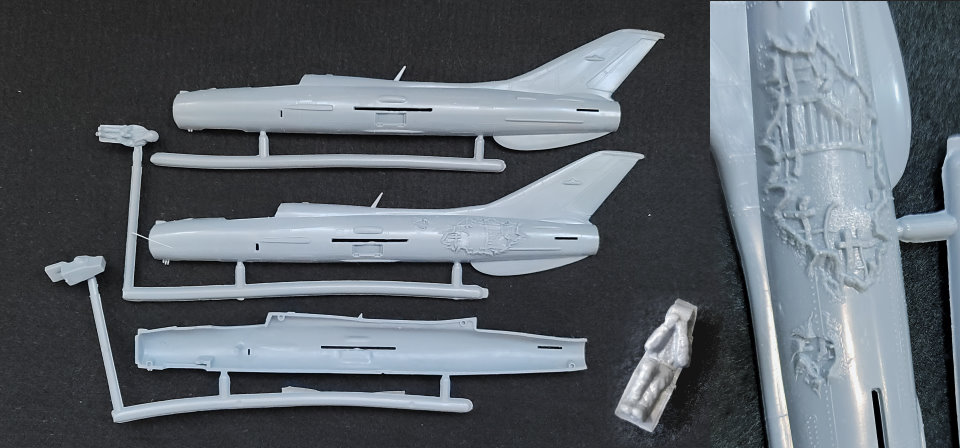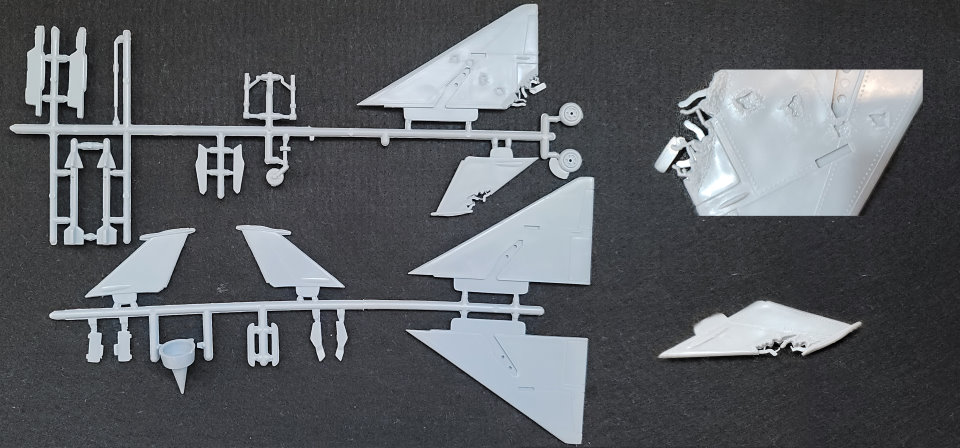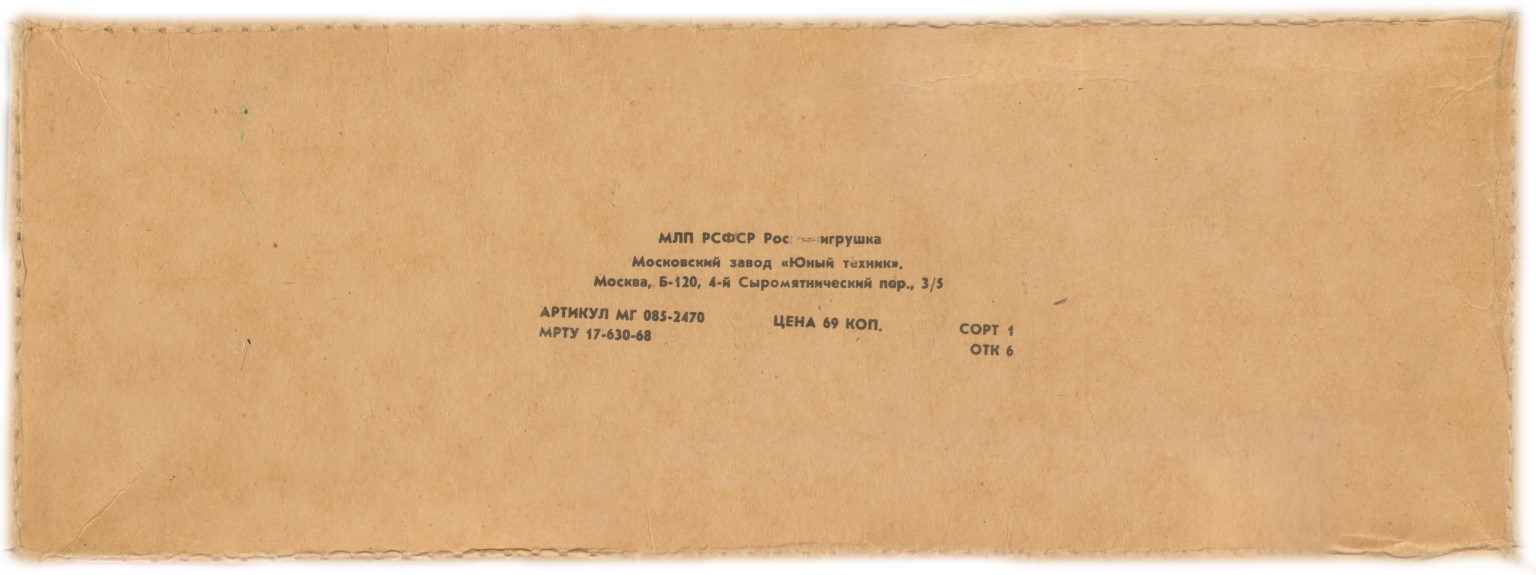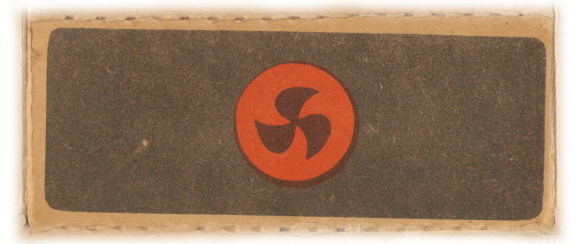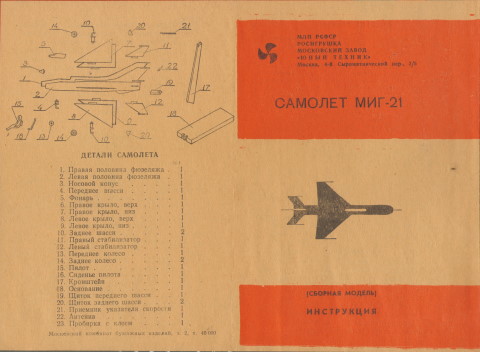
FROG F263 MiG-21 Fishbed, Rovex Industries Ltd, 1968-69
 |







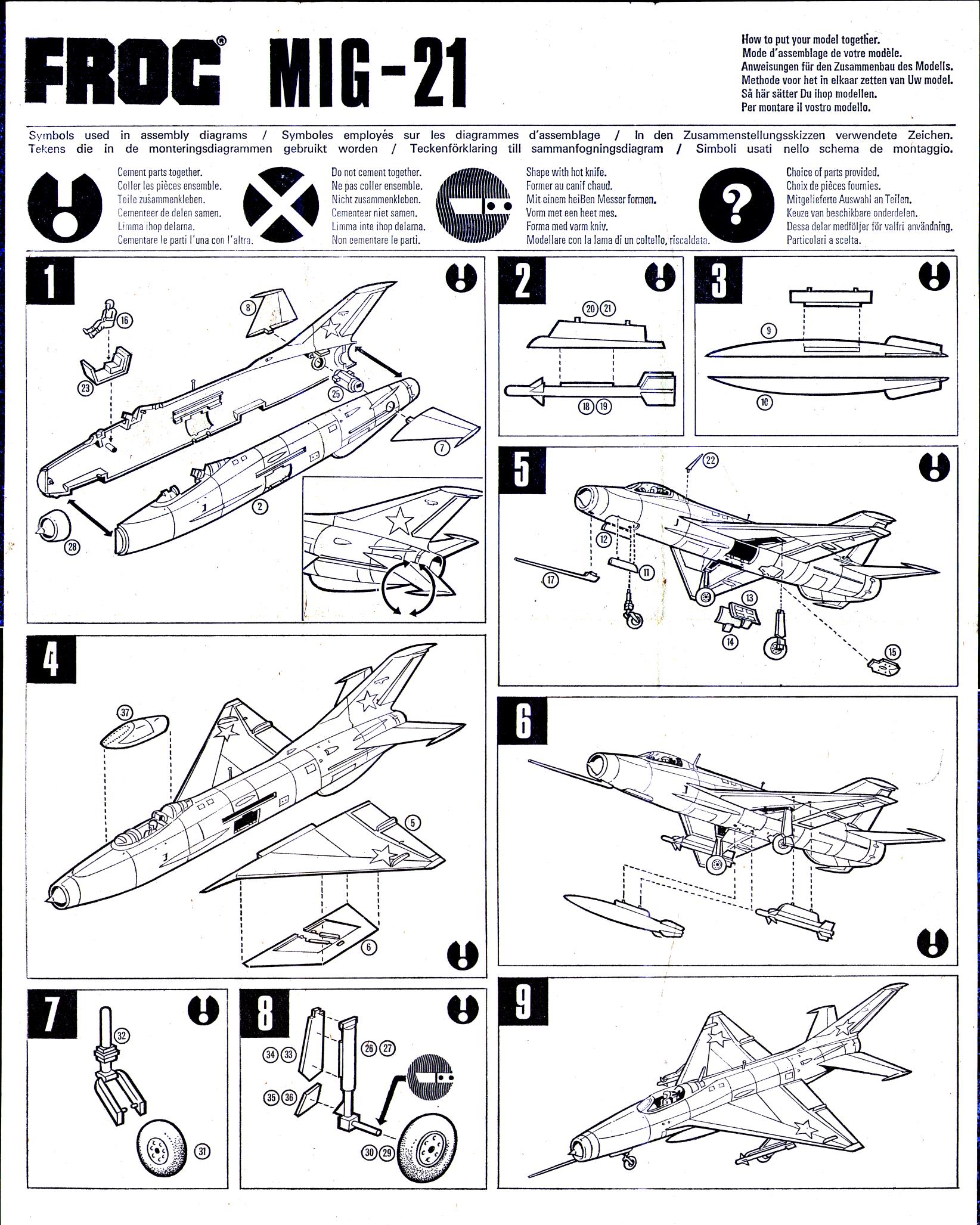


|
In 1967 the management of the Tri-Ang Group succeeded in concluding an undoubtedly historic agreement with Japan's Hasegawa Model Co Ltd. The efforts of IMA's and later Rovex's designers mainly focused on the development of British aircraft's model kits, while the rapidly expanding range of the Japanese company included the models of US aircraft. The two-way exchange of models gave both companies the opportunity to strengthen their position in their home markets by quickly filling gaps in their catalogues.
In 1968, Rovex began packing Hasegawa MiG-21 kits. Sales of the FROG F263 MiG-21 started in August 1968, just over six months after the Airfix MiG-21.
Modelling
A FROG QUINTETTE
Frog has issued no fewer than five new kits, all to 1/72nd scale, during recent weeks, two of these representing WW II types, the Mosquito and the Ju 87G-1. and the remaining three representing current fighters, the MiG-21, the F-4K/M Phantom II, and the F-104G Starfighler.
The MiG-21 is another good kit, cleanly produced in somewhat streaky silver plastic and apparently accurate in outline. The component parts generally fit together well, although the manufacture of the fuselage spine and the fin integral with one fuselage half can cause difficulty. Surface detail is fine, but strangely includes Soviet insignia outlined on the surface itself, yet a really superb decal sheet includes Finnish, Jraqi and Egyptian markings as well as those of the Soviet Union. The F-104G Starfighter kit is generally of the same standard as the MiG, but is pressed in light grey plastic and offers a rather better fit of component parts. The decal sheet includes Danish, Dutch. Italian and Federal German markings, and is a real work of art. This is most probably the best 1/72nd scale Starfighter kit. and reasonably priced at 5s 9d in the UK.
W.R. MATTHEWS
Flying Review 1968-08
For the Mig-21, Hasegawa used large frames with sprues for the parts, so they did not fit into the standard FROG Green Series boxes, and special box were made for the first edition of this kit. The box was thinner, but wider and longer than the standard boxes, and the frames fit inside it completely.

The author of the drawing for the first version of the Mig-21 boxart, Walter Wright, did three other drawings for other Hasegawa repacks: A-7 Corsair II, F-5 and F-104. Walter Wright illustrated some of the Profile Publication books, other aviation books and aviation magazines, but his collaboration with Rovex was limited to these boxsarts. FROG usually provided the artists with kits and decals when they commissioned drawings. Credit must be given to the author of the drawing, he made an effort to depict the MiG-21 with the characteristic feature of the model - the "waist" of the fuselage. But much more realistically the MiG-21 is shown in Colour painting guide on base of the box.
Artists often used photographs as the source material for drawings for FROG model boxarts. Sometimes the subject was taken entirely from a photograph, sometimes just the aircraft. In this case, a photograph of a flying MiG-21F-13 Indian Air Force fighter from a well-known official photo series was used. The artist enhanced the impression of perspective by moving the point of view closer to the aircraft and depicting the launch of K-13 missiles and, accordingly, had to redraw the tail and nose parts of the aircraft slightly. The Indian cockades were replaced with red stars and a Soviet Air Force style flight number was added.
Mikoyan-Gurevkh MiG-2lF (Fishbed-C)
| F263 | 1968 -1969? | G1(G) | 190000 | 1xSoviet AF & 1xIraqi AF & 1xEgypt AF & 1xFinnish AF |
Ex-Hasegawa. This was a dated kit which actually scaled out around 1/67. Like for the F-104, a large flat box had to be used at first, but was later exchanged for a standard one with new box art.
FROG model aircraft 1932-1976, R. Lines, L. Hellstrom
|
|

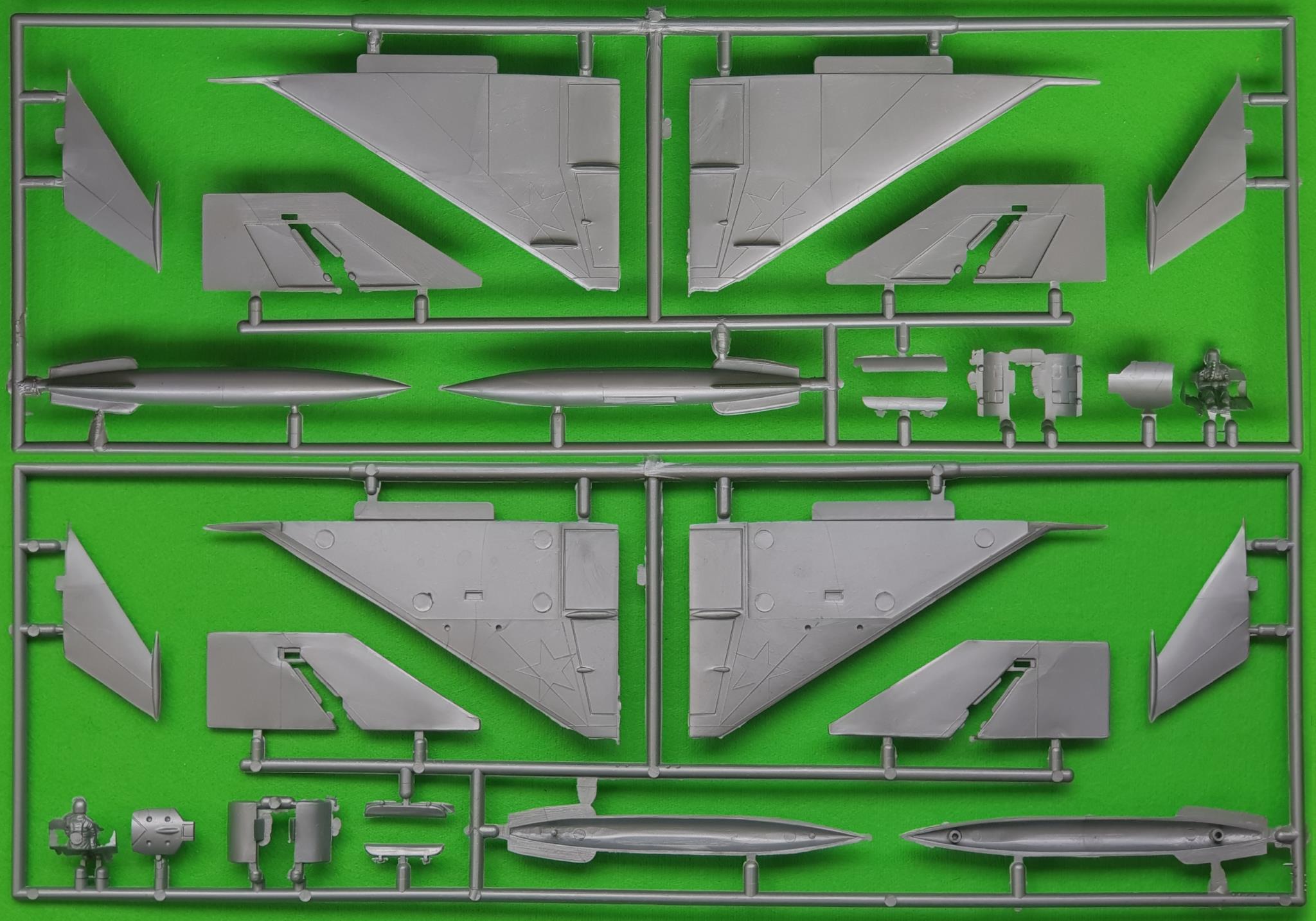

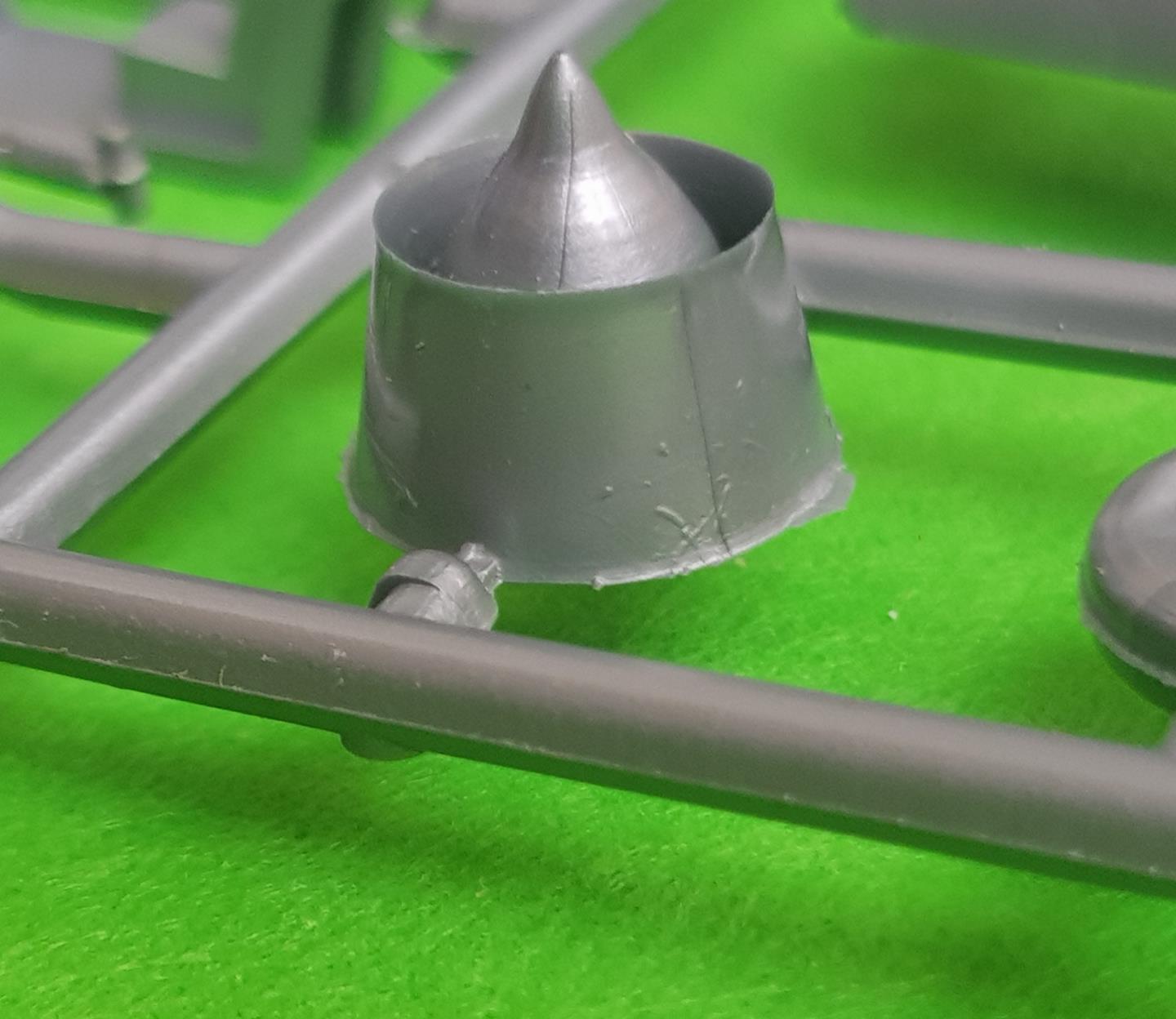
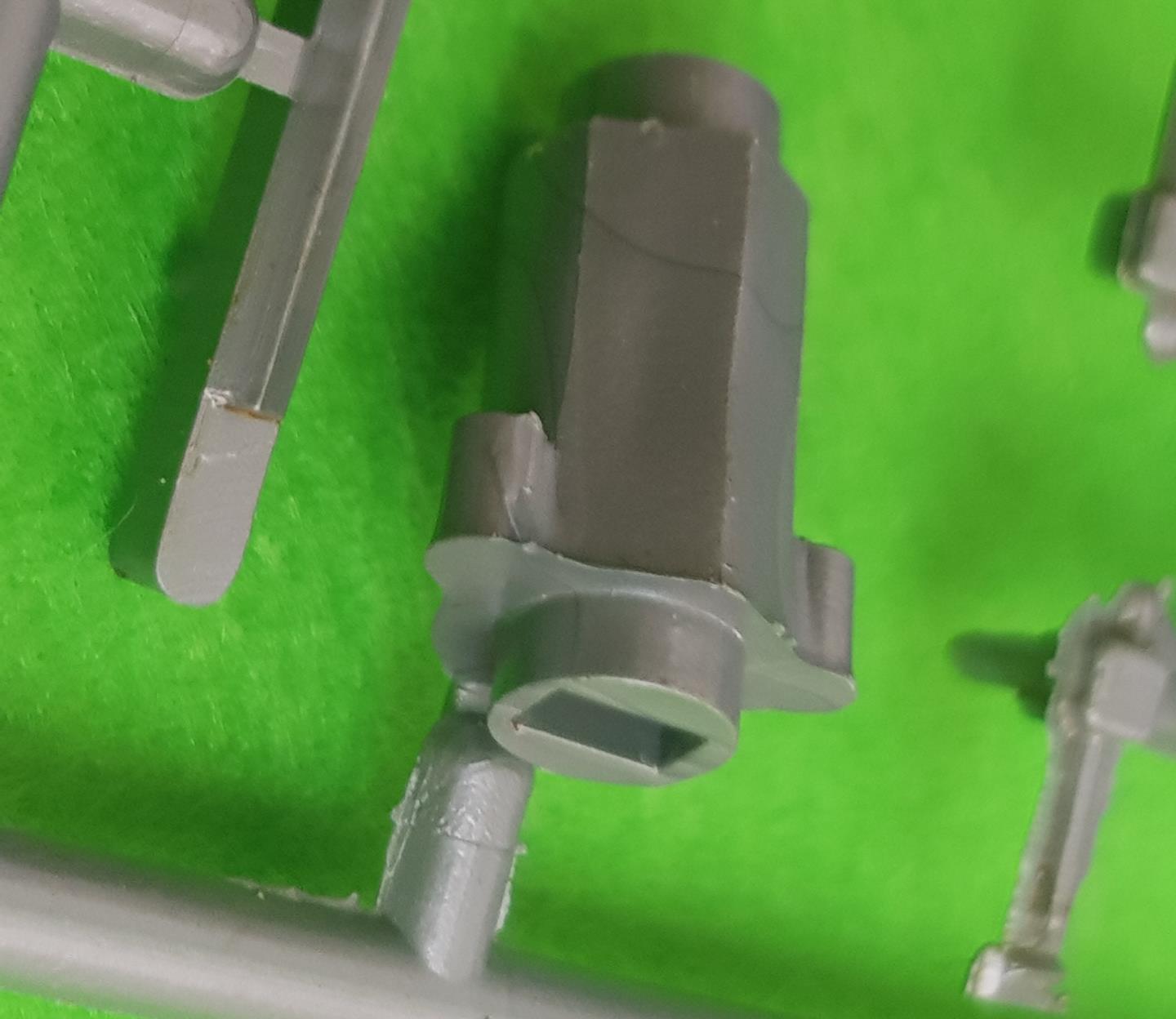
|

FROG F263 MiG-21, Rovex Tri-Ang Limited, 1969-71
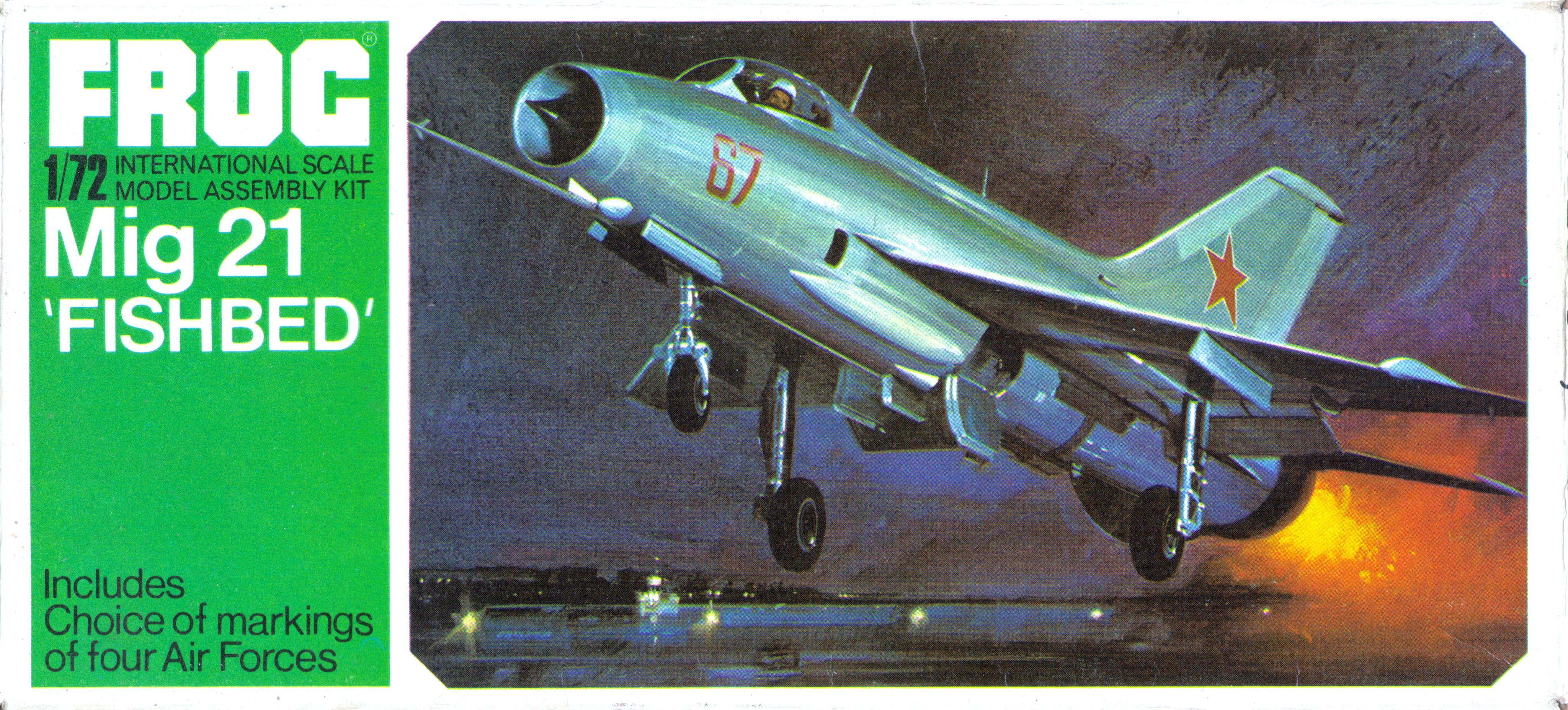
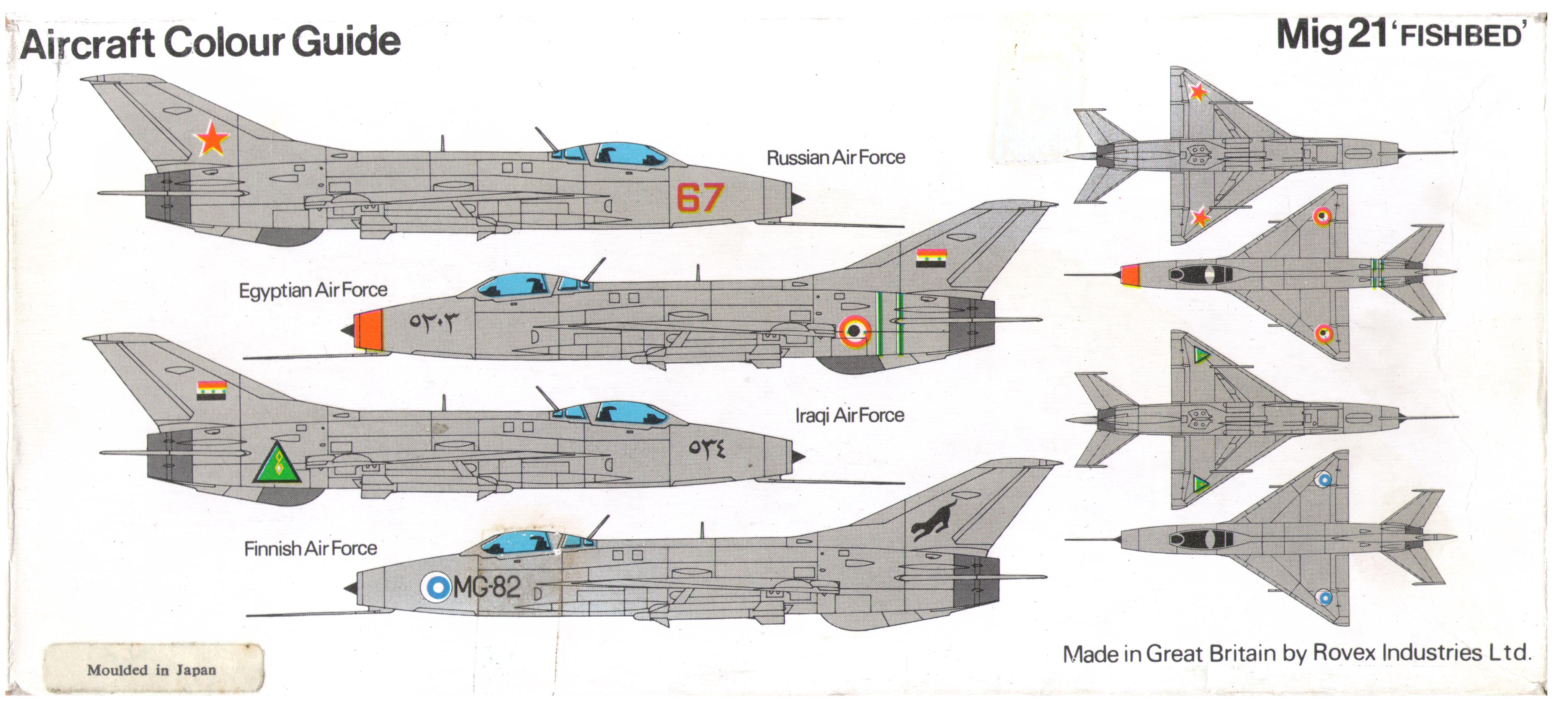



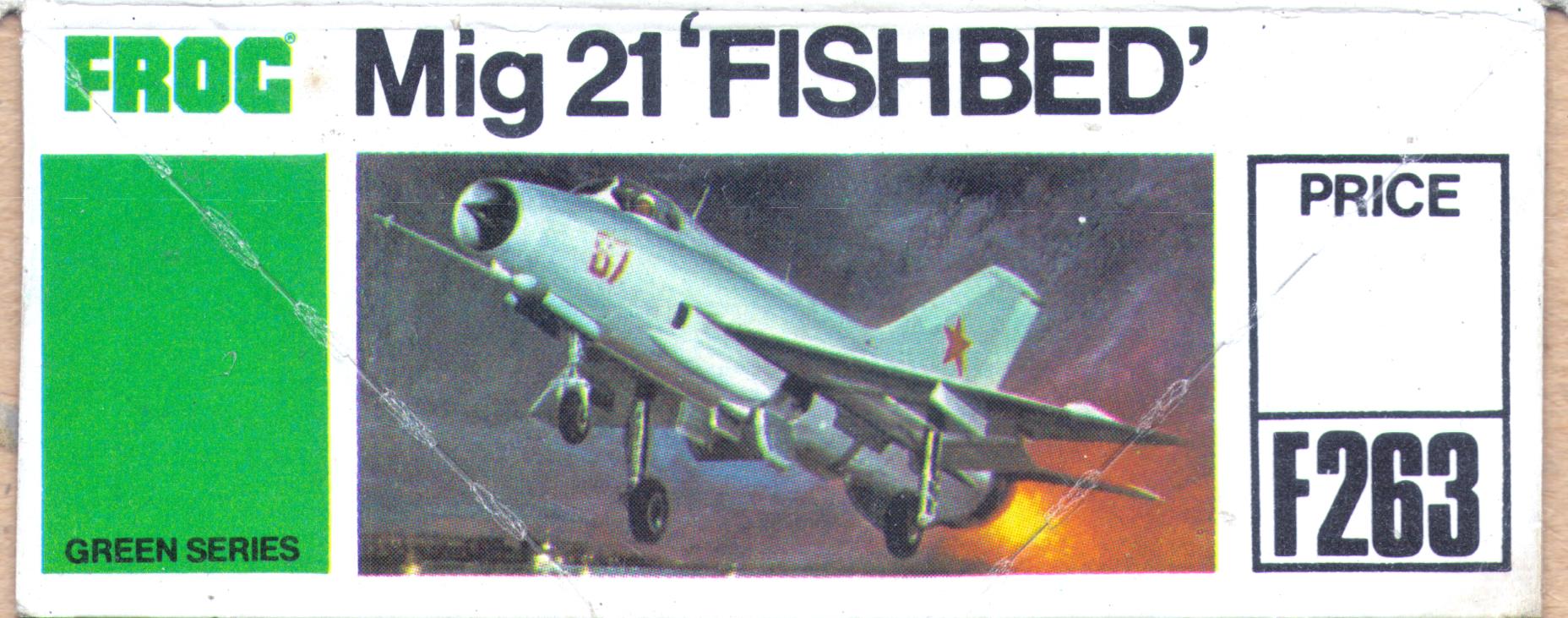
Для второго издания решили изготовить коробки стандартных размеров. Но в стандартную коробку рамки с литниками целиком не помещались и, чтобы упаковать, их приходилось перекусывать.
Для верхней части коробки этого издания был выполнен новый рисунок. Художник Vic Carless заимствовал часть удачной композиции с рисунка на первой коробке японской модели. Хотелось бы отметить, что японские художники нередко добавляли драматизма сюжету, изображая пилота самолета со взглядом устремлённым на зрителя. На боксартах британских коробок такой элемент композиции практически никогда не использовался. В данном случае мы видим исключение из правила.
Инструкция, декаль и схема окраски на нижней части коробки для четырёх вариантов остались без изменений. Чтобы подчеркнуть чистокровное японское происхождение, на нижней части коробок Rovex-овских репаков наносилась надпись "Отлито в Японии".В 1970г очередные организационные изменения привели к смене названия подразделения, занимавшегося выпуском моделей, в связи с чем на нижней части коробки модели MiG-21 поменялось название компании с Rovex Industries Ltd на Rovex Tri-ang Ltd. Увы, на этот раз организационные изменения не решили проблем и осенью 1971г группа компаний Lines Broth. рухнула под тяжестью долгов. Тем не менее, деятельность компании Rovex, занимавшейся выпуском сборных моделей FROG, оставалась успешной и под банковские гарантии производство продолжалось. В январе 1972г Rovex-Triang Ltd был приобретен одним из гигантов игрушечной индустрии - Dunbee-Combex-Marx. После смены собственника в производство запустили серию из четырёх моделей Hasegawa в масштабе 1/32.
Несмотря на очевидные недостатки модель пользовалась стабильной популярностью и за три года FROG смог выпустить 190000 экземпляров обоих изданий. В настоящее время модель несложно приобрести на аукционе Ebay по цене от 7-ми фунтов. Первые японские издания со старым логотипом компании купить намного сложнее и цена на них может превышать цену на фроговский репак в пять-семь раз.
1/72 scale MiG 21 kits.
The MiG 21, especially in its later forms, is one of my favourite modern aircraft. Whereas the Phantom and Lightning impress and delight me by their magnificent awesome sense of power, the MiG 21 pleases because of its elegant aerodynamic design. It achieves a similar performance to the other two fighters on comparatively low power. It has beautiful, yet simple lines. In my view the enlarged intake design and fattening aft of the hood, along the spine, of the MiG 21PF, 'FL and 'M have enhanced the appearance of this classic tailed, thin delta wing fighter.
There have been several attempts to produce satisfactory MiG 21 models in 1/72 scale. Up to now all the kits have been of the MiG 21F (known by the NATO code-name of Fishbed C). The Airfix kit is possibly the most accurate, although it looks a little slim. The Frog/ Hasegawa kit suffers from excessive fuselage waisting. At one time many GAs showed this feature, although the most recent photographic evidence shows no evidence that any waisting is present.
It is a widespread, but mistaken belief that an aeroplane has to have fuselage waisting to conform to the area rule, and many people assumed that the MiG 21 would have to be waisted to achieve level supersonic performance. In a true area-ruled-aeroplane the total cross-sectional areas of all the components across a given point are taken into account, and this is calculated at given points at intervals throughout the entire aircraft from nose to tail. This would be like cutting through an aircraft, say, across the centre, and calculating the cross sectional area of each component cut through, possibly the main fuselage, parts of the wings, drop tanks, and fuselage spine. The sum total of all these areas is then plotted on a graph to produce a theoretical curve from nose to tail. The ideal aircraft shape should be as near to a perfect curve as possible, but on most supersonic aircraft there has to be some compromise between the ideal shape and operational necessity.
The waisting on some aircraft is a convenient way of conforming to the theoretical curve by subtracting the sum of the wing cross sectional area from the fuselage at a given point, but this is not essential if the wing is very thin and the fuselage is designed skilfully. Some aeroplanes have bulges added in certain places to fill up local deficiences in cross sectional area, such as the widened area aft of the wing on the Buccaneer fuselage and the aerodynamic "carrots" added to the trailing edge of the wing of the Victor Mk 2. It may be that the local enlargement of the spine aft of the cockpit hood on the MiG 21 in its later variants is as much connected with improved aerodynamics as to increase internal fuel.
To return to MiG 21 kits: Heller fairly recently produced a MiG 21 F but this is very inaccurate. The wing is set at an extraordinary angle of incidence and the rear fuselage ends in a peculiar flat ellipse (with presumably an elliptical jet pipe!).
Now we have a new 1/72 scale kit from Matchbox, and this time the MiG 21 FL Fishbed E is the type. This is a very welcome model, but sad to say it has a number of faults and omissions which need to be worked upon. Nevertheless, the basis is there to make the best MiG 21 model yet.
The rear fuselage is too slender and the jet pipe is somewhat elliptical, but fortunately the large fin and rudder and ventral fin tend to obscure these errors. The enlarged spine aft of the canopy is not sufficiently pronounced. On my model I slightly raised the canopy at the back by adding thin wedges of plastic card beneath it and then a new bulged spine fairing was made from the rear portion of a Phantom underwing tank half—with marked improvement in the appearance of the model. Alternatively, the bulged spine could be built up with body putty.
The nose cone centrebody looks about the right size but the intake area does not look sufficient. The front part of the fuselage down to the intake lip seems to have too much taper, but this could be easily revised because the front fuselage is built up in two parts. It would be quite easy to replace the extreme front component with a slightly larger diameter intake and to add a new nose cone. The enlargement of the intake should only be slight, with general straightening of the extreme front fuselage.
One feature of late series MiG 21's which is missing from this model is the addition of bulges on the fuselage made necessary when larger diameter tyres were fitted. These were introduced to cope with the increased all-up weight and to permit the fighter to operate from rougher airfields. Bulges were added either side of the wheel bay openings beneath the wing, and on the fuselage sides above the wing.
The undercarriage units could also be improved. The mainwheel units in particular look very flimsy. The mainwheels too could be thicker. The nose wheel unit leg is likewise thin.
A long-range tank is included in the kit for installation under the fuselage, but the wing-mounted K-13A missiles are not supplied. These are the primary armament of the MiG 21 and should be installed under the wings Sidewinders from any 1/72 scale kit would be satisfactory as substitutes.
Decals supplied give markings for Soviet and Czechoslovakian Air Forces.
This is a long-awaited model and one, which, with alteration, can be made into a good representation of the MiG 21. It costs 25p.
James Goulding
Aircraft Illustrated 1974-07 Vol.07 No.07
Mikoyan-Gurevkh MiG-2lF (Fishbed-C)
| F263 | 1969 -1973 | G1(G) | 1xSoviet AF & 1xIraqi AF & 1xEgypt AF & 1xFinnish AF |
FROG model aircraft 1932-1976, R. Lines, L. Hellstrom
|
|
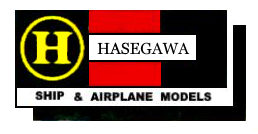
Hasegawa JS-012 MiG-21, ハセガワ ミグ21, 1966
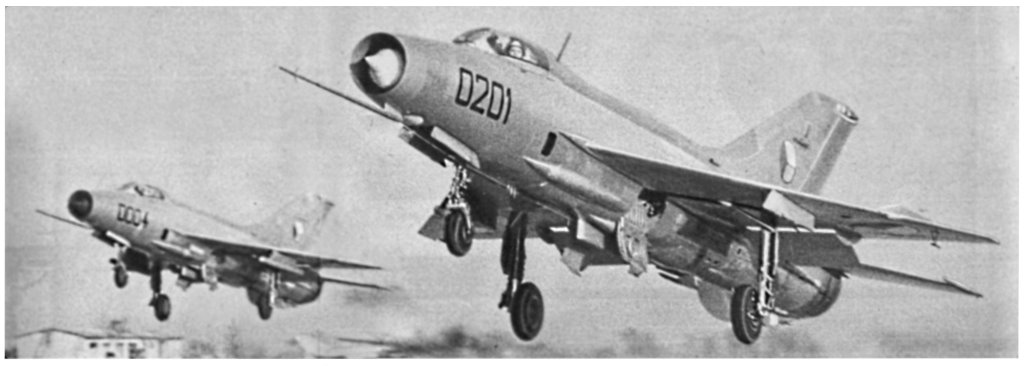
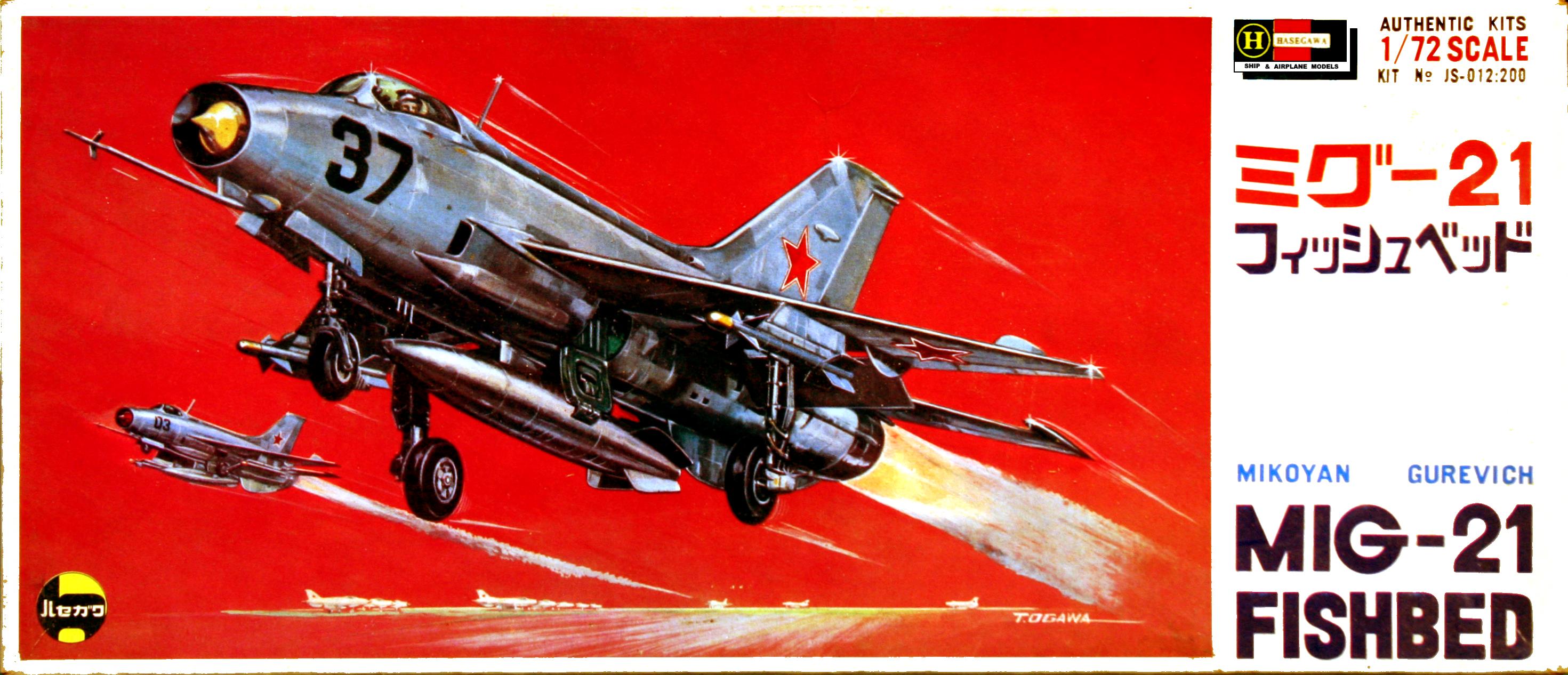
Летом 1962г японская компания Hasegawa выпустила свою первую пластиковую масштабную модель, а с середины 60-х прекратила выпуск своей традиционной продукции, изготавливавшейся из дерева, и полностью переключилась на выпуск пластиковых моделей. В это же время конструкторы компании подготовили линейку пластиковых моделей современных реактивных самолётов в масштабе 1/72. Линейка моделей включала: McDonnell F-4 Phantom II Battle Bomber, Mig-21 Fishbed Interceptor Warfighter, F-104J Starfighter Interceptor Battlefighter, F- 105D Thunderchief Battle Bomber, F-5 Freedom Fighter Light fighter. Каждая из этих моделей поступила в продажу одна за другой в течение 1966г по цене 300 иен, что в то время составляло около одного доллара США. (Что интересно, на приведённом изображении коробки указана цена 200 иен, редко встречаются издания с ценой 250 йен. В Японии, находившейся в условиях американской оккупации, использовалась американская система, когда после артикула товара через тире или двоеточие указывалась его цена.)
К сегодняшнему дню десятки модельных фирм выпустили сотни переизданий своих моделей МиГ-21, но в 1966-м году модель Hasegawa MiG-21 была самой первой. В апреле 1966г поступил в продажу Фантом, а МиГ-21 - в мае. Продажи Airfix MiG-21 стартовали только в январе 1968 года. К этому времени МиГ-21 уже продемонстрировал свои выдающиеся боевые качества в воздушных боях во Вьетнаме в обстановке подавляющего воздушного превосходства со стороны американской авиации, проявил себя в небе Кубы во время Карибского кризиса 1962г и, несмотря на то, что успехи истребителя тщательно замалчивались средствами массовой информации Запада, стал знаменит на стороне противников СССР. Более того, ко времени выпуска японской модели самолёт поступил на вооружение Индии и капиталистической страны - Финляндии. Тем не менее, в том числе из-за обстановки секретности в самом СССР и требования к странам-покупателям самолёта о базировании его на строго охраняемых базах о самолёте в то время было известно немного фактических данных. Поэтому модель конструкторы Hasegawa создавали по немногочисленным фотографиям, используя собственное воображение для реконструкции его вида.
Длина фюзеляжа модели и размах крыла получились на пару сантиметров больше для масштаба 1/72. Макетчики компании Hasegawa предположили, что фюзеляж МиГ-21 не может не быть спроектирован без учёта правила площадей, поэтому модель получила изящную талию. Модель имела специальный узел, воспроизводивший подвижное цельноповоротное горизонтальное оперение. Отдельной деталью был отлит воздухозаборник с центральным телом. Передние кромки воздухозаборника имели острые края, а центральное тело воздухозаборника по своей форме выглядело похожим на МиГ-21Ф, но было заметно больше по размеру и занимало неестественно выдвинутое положение в воздухозаборнике. К сожалению боковые тормозные щитки отсутствовали, но задний тормозной щиток снизу фюзеляжа был дан отдельной деталью. На обоих половинках деталей фюзеляжа по его бортам были воспроизведены автоматические противопомпажные створки в открытом положении. По стандартам середины 60-х деталировка кабины полностью отсутствовала, Пустоту внутри заполнял собой пилот-карлик приклеивавшийся к чудной тумбе на полике кабины, а заголовник катапультируемого кресла отливался на половинках фюзеляжа. Прозрачная деталь остекления кабины имела трудноудаляемую внутреннюю гравировку, что не было редкостью для моделей того периода. Технологически легче было нанести гравировку на выпуклой части формы для фонаря кабины и такой способ в то время часто использовался. К сожалению форма фонаря лишь отдалённо напоминала оригинал, а из-за внутренних линий расшивки переплёт фонаря получался непропорционально толстым. Кроме этого, отсутствовало остекление неподвижной части фонаря. Этот элемент остекления кабины был изображён внешней расшивкой на половинках фюзеляжа. Вооружение самолёта состояло из одной пушки по правому борту. Обтекатели правой пушки и снятой левой отливались заодно с половинками фюзеляжа. На пилонах очень похожих на АПУ-28 монтировались две ракеты К-13, а на пилоне под центральной частью фюзеляжа - подвесной 800-л топливный бак. Все эти детали давались отдельными частями и легко могли быть доработаны. Ниши шасси были выполнены отверстиями в фюзеляже и тоже требовали доработки.
HONG KONG COMMENT
The second model in the new HASEGAWA Jet Fighter Series is the MiG-21.
Hasegawa, in line with most Japanese firms, have redesigned their boxes and the packing for this latest kit looks most attractive.
This is a simple kit, and the only parts that move are the one-piece tailplane sections and the wheels. In order to obtain sharp leading and trailing edges the rudder is moulded with one of the fuselage halves, and the wings have an inset panel on the underside. These wings are perhaps the best moulding in the kit, with the fences and teardrop hinges very well handled. All parts are in a rather too dark grey which will give painting problems, as most of these aircraft are in natural metal finish. The kit is correctly to scale, the outline is correct, and it seems to have all the panels and blisters in the right places for a Fishbed C. Some of the small parts have a bit of flash but the main parts are cleanly moulded with only panel lines, which could have been lighter, to break the contours. For some peculiar reason the stars of the Russian insignia have been moulded into the parts, peculiar because a very reasonable matt decal sheet provides Russian, Chinese and Czechoslovakian markings, the latter two of course not conforming to the moulded outlines. On a point of detail, although China has the 3 version of this aircraft, I am not sure that Russian aid ran to the C version - of course I could take the train to Canton to find out, but that may be the end of this feature in the Magazine for a year or two!
Two Atoll missiles and a belly tank are the only stores carried by this simple but welcome addition to Japanese plastic kits.
Colin Bramwell.
The IPMS magazine, october 1966"
A MIG FROM JAPAN.
In much the same performance bracket if somewhat smaller and lighter than Saab's Draken, the MiG-21 can, from certain aspects, be considered the fighter of the mid sixties in the same way that its forefather, the MiG-15, was the fighter of the early fifties. We do not intend to infer, of course, that either the MiG-15 or MiG-21 have been the best in their respective generations, although few would deny that, despite certain obvious shortcomings, they are superlative aeroplanes; world events, however, have brought them into the public eye to a greater extent than most of their western contemporaries. In view of the publicity achieved by this Soviet fighter, it is more than a little surprising that no kit of the MiG-21 has been available before now, and that the first should come from the Japanese Hasegawa company.
To 1/72nd scale, Hasegawa's MiG-21 is, in general, a good representation of its subject, although its quality is lower than comparable western kits in some respects. There is a good deal of flash, the injection gates are heavy, and the fit of some of the component parts is not as precise as might be desired. Moreover, the kit is moulded in grey rather than silver plastic, which would seem a little odd for a model of an aircraft which is invariably flown in natural metal finish. These faults can be rectified, however, if care is taken in assembly, and as the kit is accurate in outline and neatly detailed, the result can be a very attractive model. The transfer sheet offers Soviet, Sino-Communist and Czechoslovak markings, and is well produced, but for some inexplicable reason the Soviet star emblem is impressed into the plastic surfaces, rendering difficult the satisfactory use of any marking other than Russian! The price of the model is not known at the time of writing but is unlikely to be high, and in view of the interest of the subject is well worth obtaining.
W R MATTHEWS
Flying Review 1967-02"

В конце 60-х, когда уже было заключено соглашение об обмене отливками с компанией Rovex, японская компания обновила стиль коробок: главной особенностью стал рисунок самолёта на белом фоне, появилась эмблема компании в виде шлема с указанием масштаба и изменился логотип на черно-красном прямоугольнике с наименованием компании. Артикул, отливки модели, её цена, инструкции и декали остались прежними.
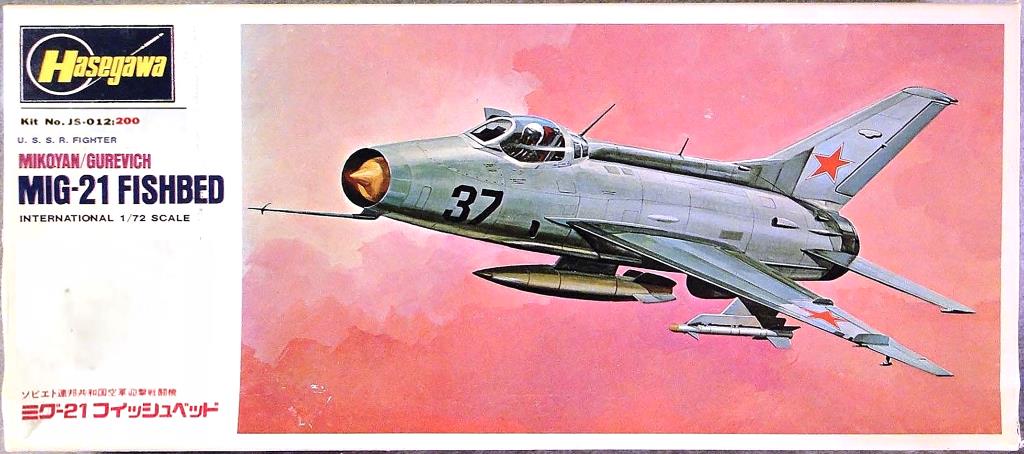
Во второй половине 70-х пресс-форму отреставрировали и незначительно переработали для третьего переиздания набора Hasegawa JS-012. Убрали узел подвижного цельноповоротного горизонтального оперения, сделав его неподвижным, заглушили ниши шасси в фюзеляже и противопомажные створки, а также удалили гравировку звёзд.

В 1980-м году компания Hasegawa сменила систему артикулов своих моделей. Вероятно это было связано с тем, что прежняя трёхразрядная нумерация моделей в каталоге компании далеко превысила сотню. Многие модели давно покинули каталог и такая нумерация стала слишком громоздкой и малопонятной. В очередном переиздании Mig-21 Fishbed попал в серию C и получил артикул C002-450. Из-за роста цен, вызванного инфляцией в Японии, модель стала стоить 450 йен (~$4,5). Что интересно, рисунок на коробке, изображавший взлёт пары арабских МиГ-ов, напоминал рисунок с первого варианта коробок.
С годами появлялось всё больше новых моделей истребителя МиГ-21, они становились всё точнее, их деталировка - всё совершеннее и постепенно модель Hasegawa переходила в категорию "совсем не нужна". Как это ни странно, но она до последнего времени оставалась в продаже и Hasegawa продолжала её выпуск и переиздание. Сейчас эта модель не является дефицитной и, скорее всего, представляет из себя предмет гордости для компании Hasegawa и некий курьёз для коллекционеров моделей.
|




























 ba.jpg)
 bb.jpg)
